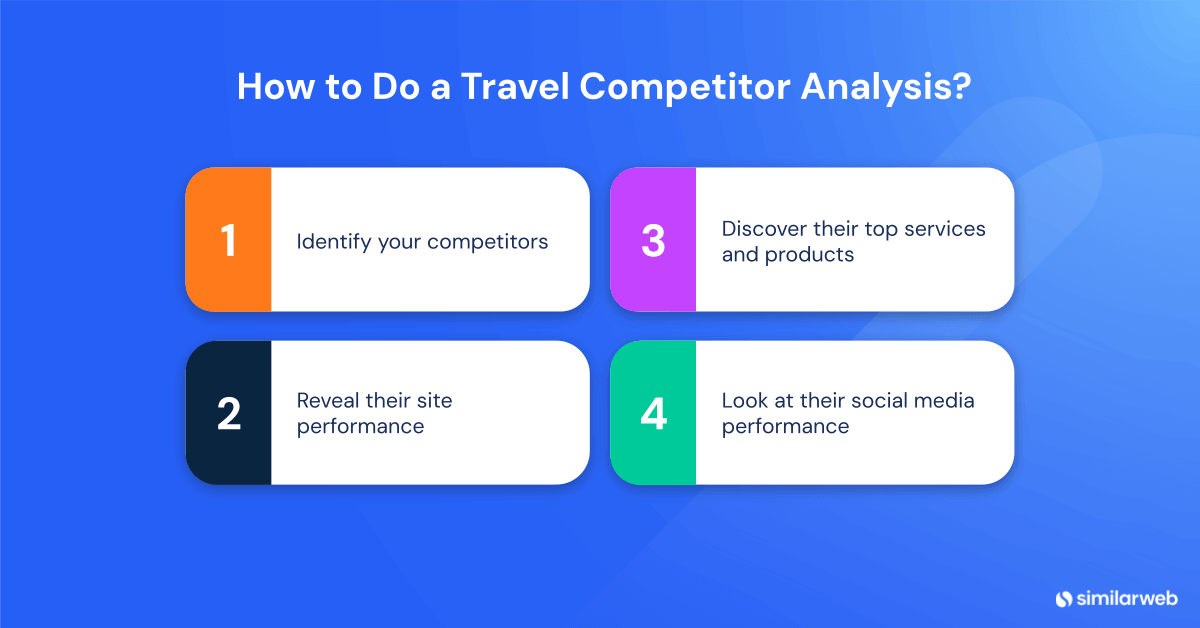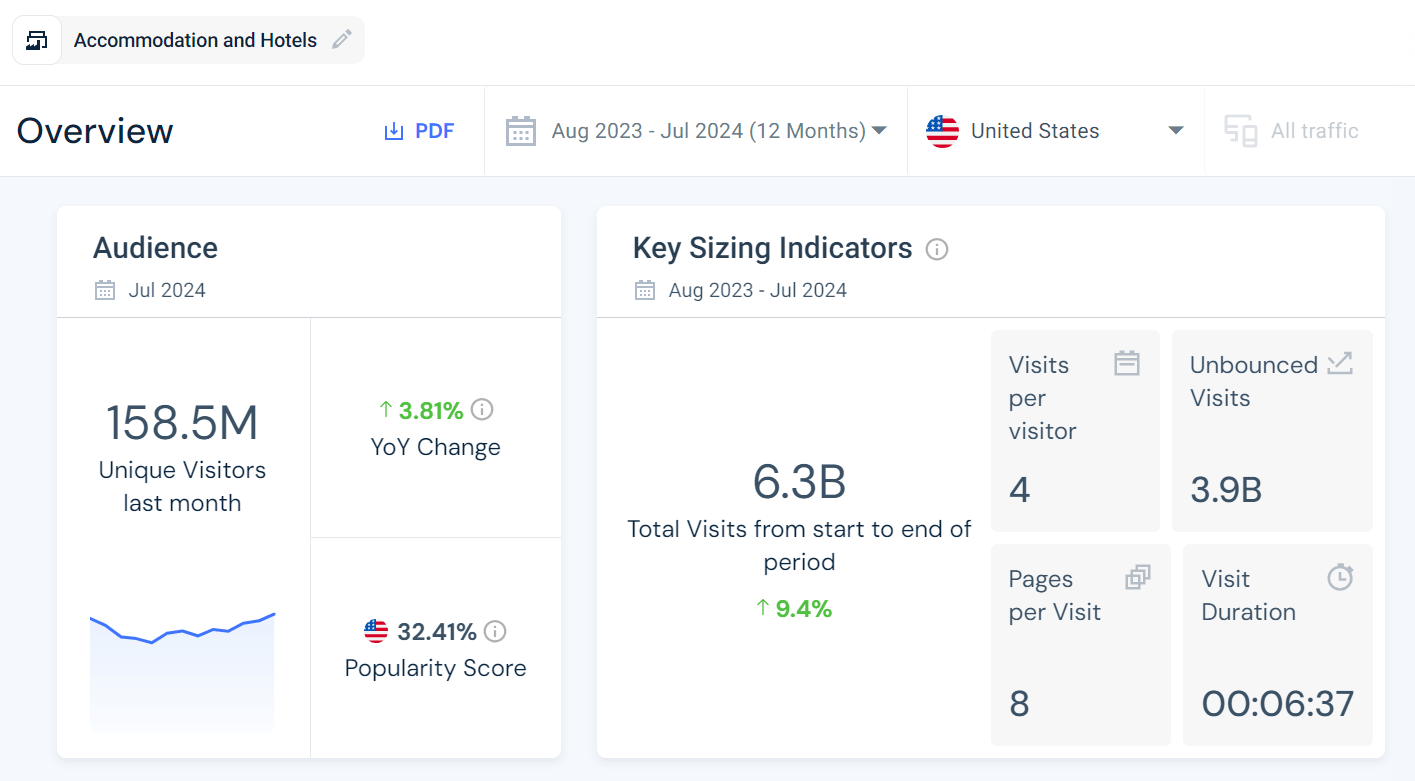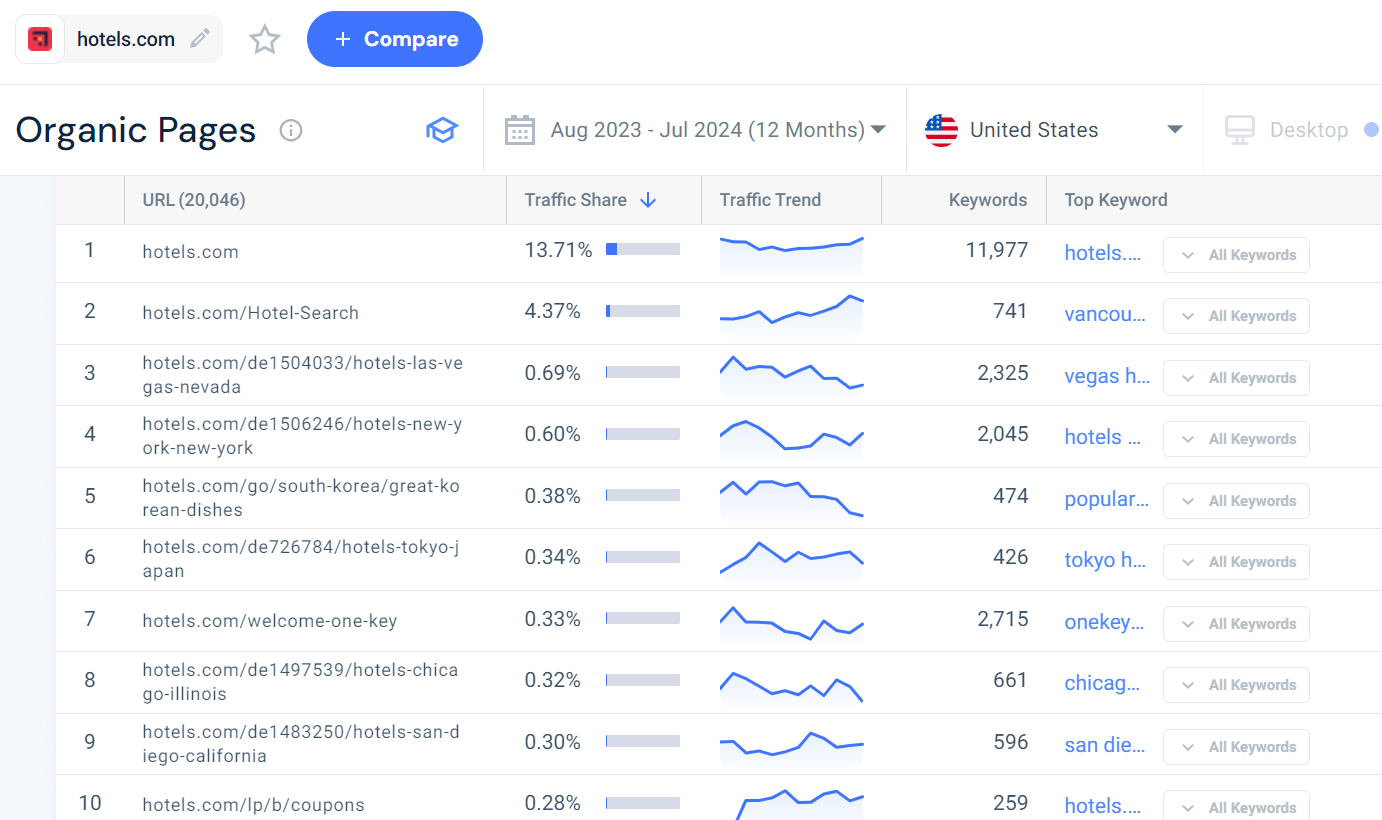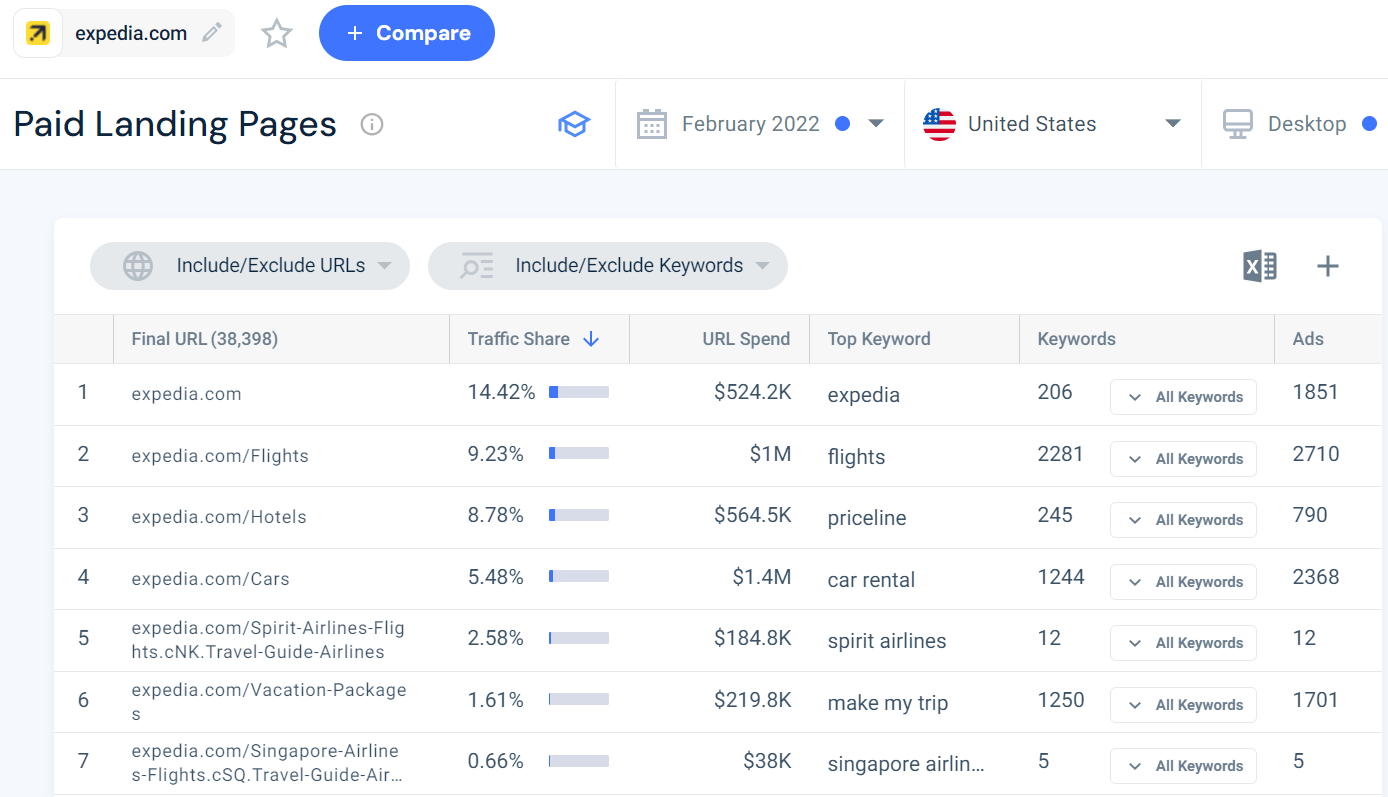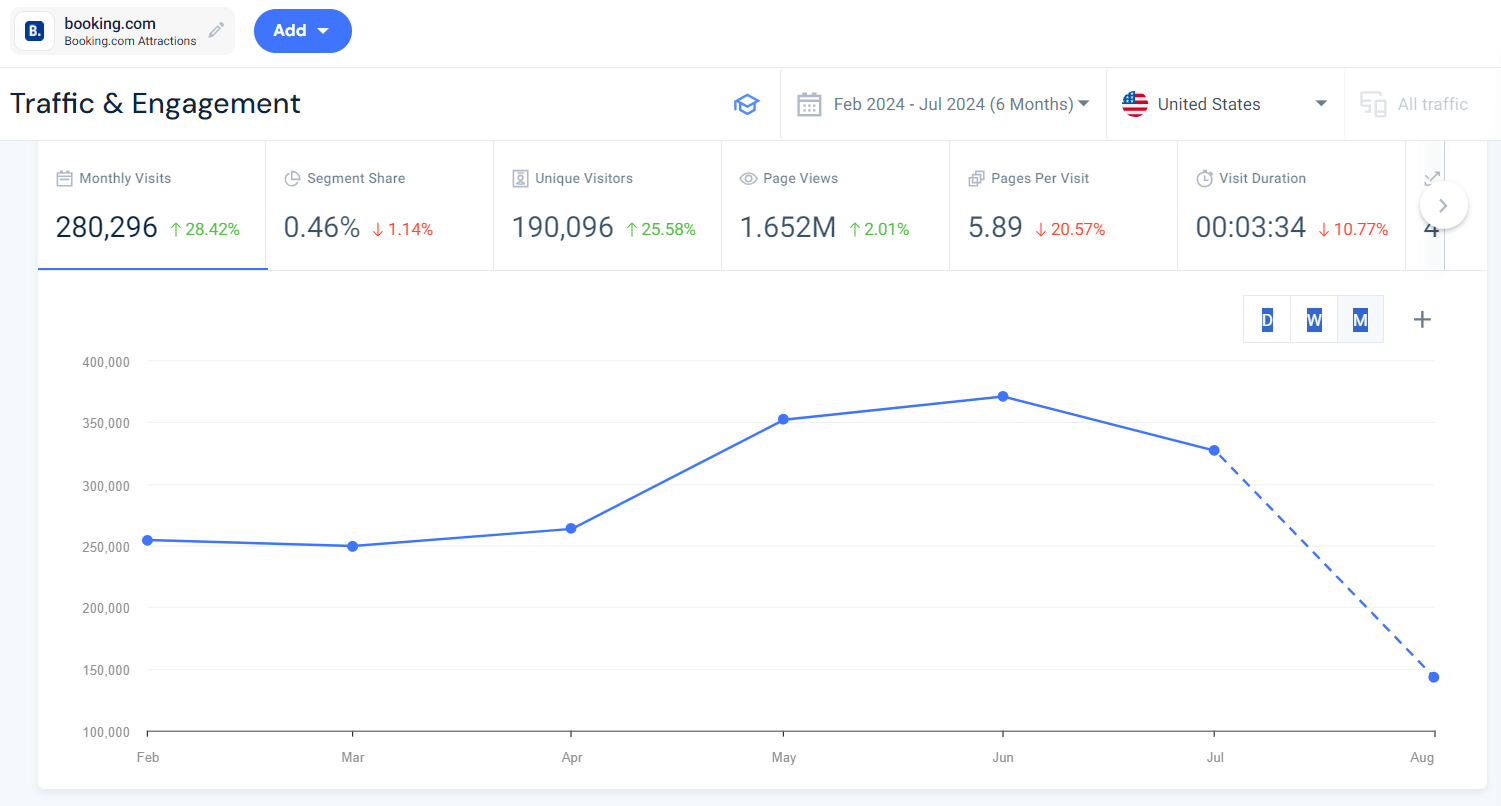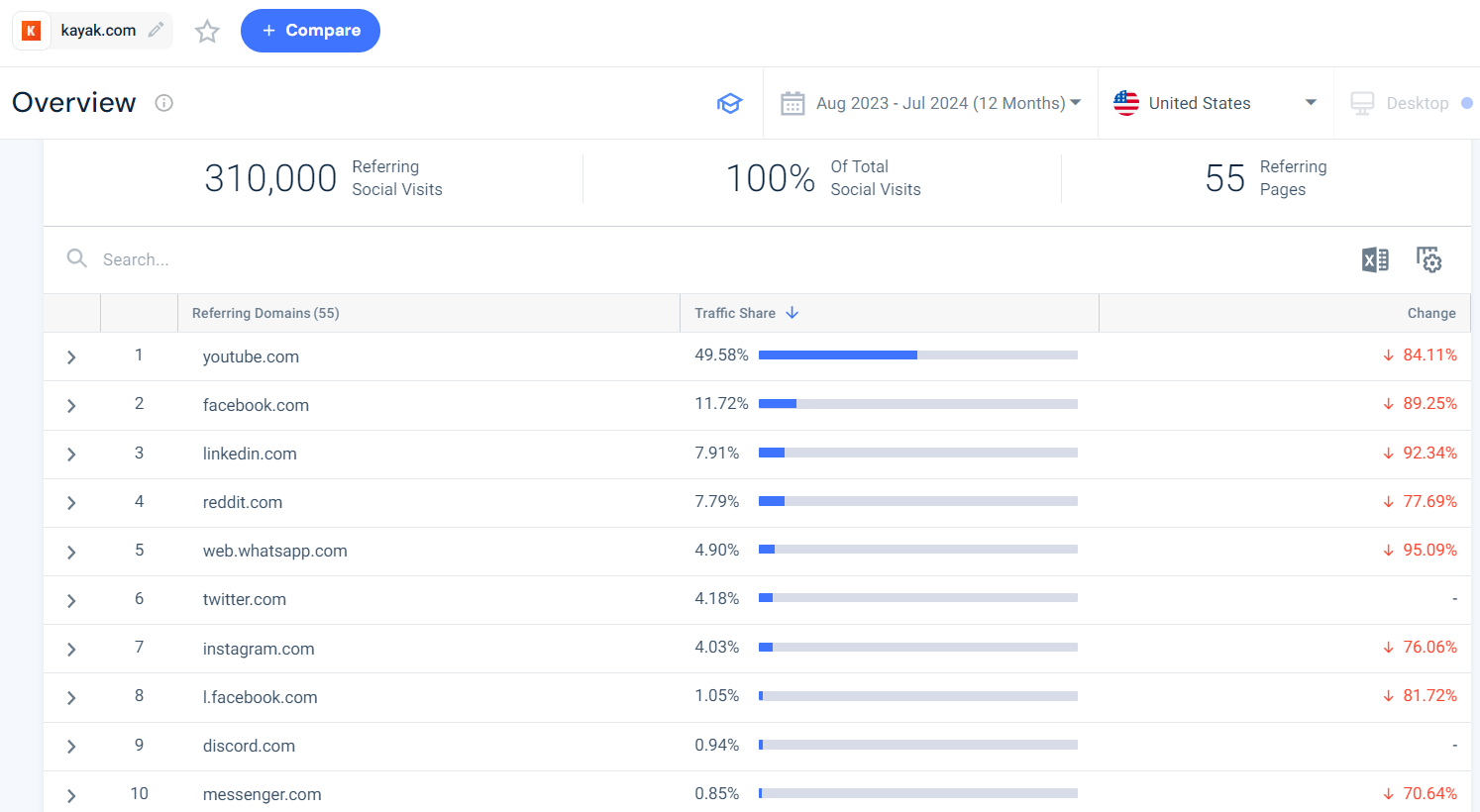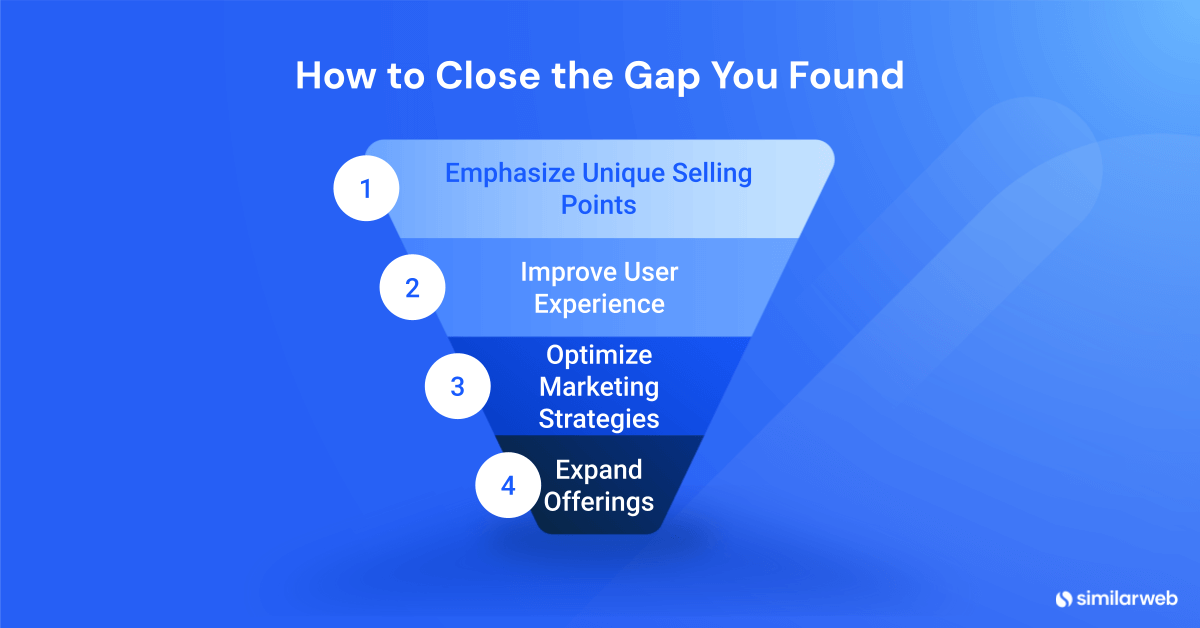Mastering Travel Competitor Analysis: A Step-by-Step Guide

The US travel and tourism industry has seen an impressive 23.2% growth in 2023 compared to last year. There is no denying the fact that businesses in this sector have an excellent opportunity to capitalize on this momentum and boost their presence in the market.
If you’re looking to take your travel business to the next level, it’s crucial to understand the competitive landscape. The reality is, that many businesses are targeting the same audience, and standing out requires a strategic approach. By thoroughly analyzing your competitors, you can uncover ways to set your services apart, offering something that truly shines in terms of quality and value.
Let’s explore why competitive analysis is key in the travel market and how taking the right steps can help your business flourish.
What is competitor analysis in the travel industry?
Competitor analysis for travel businesses is all about digging into what your rivals are up to – looking at their strengths, weaknesses and overall strategy in the market.
It helps you pinpoint exactly where you can gain an edge over the competition. This process involves benchmarking your performance, aligning your services with market demand and spotting gaps in what others offer. It also includes evaluating the market size and conducting thorough market research to make more data-driven decisions that will back up strategic planning.
How to do a travel competitor analysis?
Simply knowing who your competitors are won’t get you far – you need valuable insights to identify market trends, understand their strengths and weaknesses and craft strategies that set you apart.
Our step-by-step guide will show you how to conduct an effective competitor analysis using Similarweb’s powerful tools. By uncovering where your competitors excel and where they fall short, you can refine your strategy and use those insights to position your business more competitively in the market.
Identify your competitors
Competitor analysis starts with figuring out who your competitors are – both direct and indirect.
- Direct Competitors: These are businesses nearby that offer similar travel services to you.
- Indirect competitors: These could be companies that fulfill the same customer needs but provide different travel services or products.
Similarweb’s Market Overview feature gives you a clear picture of key players and market dynamics, offering an accurate view of the market size.
With Similarweb’s detailed data, you can go beyond just identifying the obvious competitors and spot those that are less so – like a physical travel agency viewing virtual tour operators as indirect competitors offering tech-based solutions to the same target audience.
Understanding this helps you stay ahead of market shifts and be proactive in your strategy, which is key for online travel companies aiming for long-term success.
Uncover their site performance
Understanding how your competitors’ websites perform is crucial to gaining insights into their digital presence and user engagement. Similarweb’s Website Performance tool gives you a detailed look at key metrics, such as:
- Total Visits: This shows the number of visits to a competitor’s website within a period.
- Device Distribution: This reveals the exact percentage of the traffic received through devices, whether desktop or mobile.
- Engagement Metrics: These are key performance indicators such as bounce rate, page views per visit and average visit duration.
By analyzing these metrics, you’ll see where your competitors excel and identify areas where your business can outshine them. Comparing these metrics with your own website’s performance highlights opportunities for improvement.
For example, if your competitors have a significantly lower bounce rate, it could signal that their site is better at engaging your audience. By digging into the details, these insights can help you enhance your content and user experience to keep visitors on your site longer.
Also, if most of their traffic comes from social media or paid campaigns, it could lead you to rethink and adjust where your focus lies. These insights help you make data-driven decisions about improving your website’s performance and engaging users.
Discover their top services and products
To understand what drives your competitors’ success, it’s essential to identify the specific products and services that bring them the most traffic. Similarweb’s competitor analysis tools, like Top Organic Pages, Paid Landing Pages, and Segment Analysis, provide valuable insights into this.
By analyzing which offerings resonate most with their audience, you can adjust your own products and services to better meet market demand. This kind of competitive product analysis helps you fine-tune your approach and improve your chances of capturing more attention in the market.
Top organic pages
Discovering which pages drive the most organic traffic to your competitors is key to understanding what’s working for them content-wise – including the types of content and keywords that perform best for their audience. Armed with this information, you can fine-tune your SEO strategy to better capture organic traffic and improve your visibility in search results.
Paid landing pages
With Similarweb’s Paid Landing Pages tool, you can pinpoint which of your competitors’ landing pages are driving the most paid traffic to their site. You can see which products or services they’re heavily promoting through PPC campaigns. By understanding where they’re focusing their marketing dollars, you can gain valuable insights into which areas are most profitable and optimize your own paid marketing efforts to target those high-reward opportunities.
Segment analysis
Running a segment analysis allows you to focus on specific areas of a competitor’s website, gathering performance metrics on traffic, user behavior, and engagement for particular products or services. This in-depth look is valuable for spotting trends in customer preferences and behaviors – key insights that help you tailor your offerings to better align with market demand.
These insights into your competitor’s top services and products provide critical intelligence, revealing what keeps their customers coming back. This can help you refine your competitive intelligence and improve customer loyalty for your own business.
For example, if one of your competitors drives organic traffic through informative blog posts, creating similar content can attract a like-minded audience to your site. Additionally, by leveraging detailed segment analysis, you can shape your product development to meet customer expectations and fill any gaps left by your competitors. These strategic tweaks will help keep your offerings relevant and competitive in the market.
Look at their social media performance
Social media plays a key role in customer engagement. By analyzing your competitors’ social media performance, you can gain insights into the strategies they use and how effective they are across various platforms. Similarweb’s Social Media Traffic Analysis tool allows you to dive into trends like:
- Social Traffic Trends: Track how your competitors’ social media traffic has evolved over time.
- Traffic Distribution: See which platforms (e.g. Instagram, Facebook, etc.) drive the most traffic to their sites.
This data can guide you in creating a more targeted, data-driven social media strategy to boost your brand’s presence and engagement. For example, if a competitor generates the majority of their traffic from Instagram, it may be worth shifting some of your focus to that platform to increase engagement.
Additionally, using social listening tools can give you a deeper understanding of user sentiments and trending topics. This knowledge helps you craft content and campaigns that resonate with your audience, capturing their attention and building brand loyalty. By incorporating competitor insights, you can adjust your social media strategy for more dynamic and effective interactions with your audience.
Craft your strategy and close any gaps
With a wealth of insights at your fingertips, it’s time to turn them into a strategic game plan. Identify market gaps and opportunities, then craft a plan that leverages your strengths while minimizing any weaknesses. This approach ensures your strategies are not only well-rounded but also laser-focused on carving out your unique space in the market. Be sure to:
- Emphasize Unique Selling Points: Highlight what sets your brand apart from competitors.
- Improve User Experience: Analyze where competitors are excelling and optimize your site for better engagement and performance.
- Optimize Marketing Strategies: Use the data you’ve gathered to make informed decisions across all marketing channels.
- Expand Offerings: Introduce new services or products to fill market gaps you’ve identified.
Regularly monitor competitive intelligence sources to stay agile and responsive to market trends. Focus on differentiating your brand, enhancing user experience, optimizing marketing efforts, and expanding your offerings to fuel sustainable growth.
For example, if you notice a gap in eco-friendly travel options, launching tailored ecotourism packages could help you dominate that niche. Continuously use insights to fine-tune your strategy, ensuring you stay ahead of the competition.
Take your travel business to new heights
Stay in tune with market trends, keep a close eye on your competitors and develop winning strategies with a comprehensive travel competitor analysis. With Similarweb’s tools, you can get detailed insights into your competitors’ digital performance, top services and social media strategies, allowing you to make data-driven decisions that strengthen your brand and lead to market success.
Ready to elevate your travel business? Start using Similarweb for in-depth competitor analysis today and get the insights you need to outperform the competition!
FAQs
Why is competitor analysis important for travel companies?
Competitor analysis helps a travel company outline the trends in the market, the strong points and weak points of their rivals, and customer preferences. All these are important in strategizing better services and gaining a competitive advantage.
How does a travel company improve its services by performing a competitor analysis?
By assessing the offerings of competitors and their pricing, along with reviews from customers, a travel company can point out any weaknesses in its service. Addressing these gaps will help travel companies enhance their offerings to cater more appropriately to customer demands.
How can I identify my travel business competitors?
Simply categorizing your travel business competitors into direct and indirect will enable you to recognize them. While there are those offering the same services in the same areas, direct competitors also exist; indirect players offer different products targeting the same customer needs.
How frequently should travel companies analyze their competitors?
To keep abreast of market changes and competitor strategies, travel companies must carry out competitor analysis on a routine basis, at least every quarter. This assures that the process is continuous for them to switch in the fastest way possible at the fluctuations in the market, retaining the competitive advantage.
What are the most important metrics to analyze in competitor analysis for travel companies?
These can include information about website traffic, competitors’ search ranking positions, social media engagement, customer reviews, pricing strategies, and the range of services that they offer. These metrics give a good view of how your competitors are doing and in what areas your business can do better than them.
Your full marketing toolkit for a winning strategy
The ultimate solution to help you build the best digital strategy
